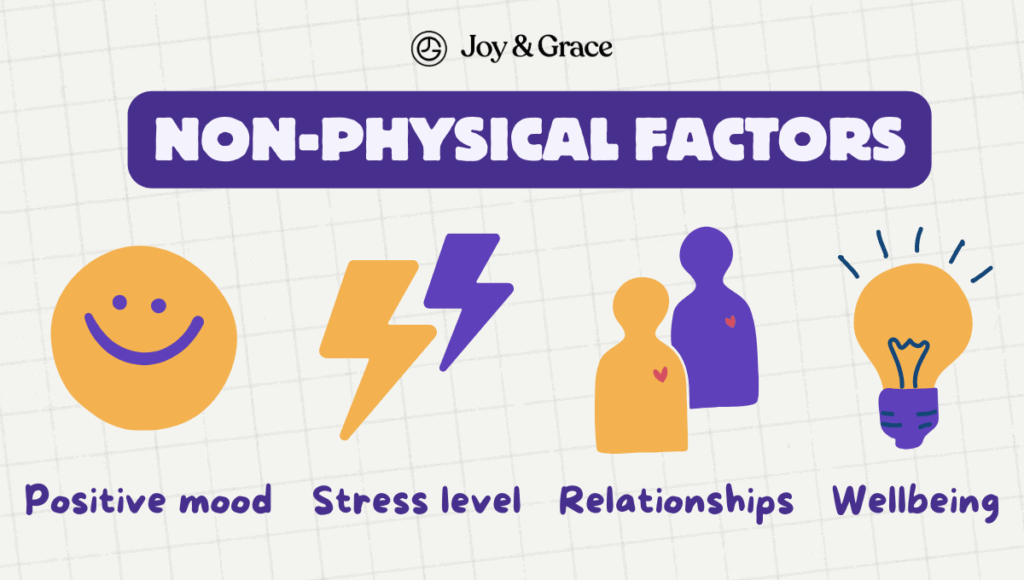Do you suffer from constant shoulder pain that prevents you from doing normal activities? You're not alone. Chronic shoulder discomfort disrupts life for millions.
This article explores:
- What causes ongoing shoulder pain?
- When to see a doctor
- The latest treatment options
- Tips to prevent future shoulder problems
Don't let persistent shoulder pain hold you back any longer. Let’s discover up-to-date information and a roadmap designed to help get your shoulder—and your life—moving comfortably again.
What is Chronic Shoulder Pain?

The American Family Physician Journal says that shoulder pain is defined as “chronic” when it has been present for longer than six months.
The shoulder joint is complex and includes bones, ligaments, tendons, and muscles. When these components become damaged or irritated, they can cause pain and inflammation. Overuse, age-related changes, or an injury can lead to chronic shoulder pain, all of which will be discussed in the following section.
What Are the Causes of Chronic Shoulder Pain?
Various things can cause acute shoulder pain that may become chronic, from everyday strain to more severe injuries, such as:
- Rotator cuff diseases, including:
- Shoulder impingement syndrome. The inflammation of the rotator cuff tendons causes this. Here, the shoulder blade applies excessive pressure on the underlying soft tissues whenever the arm is lifted away from the body.
- Bursitis is the inflammation of the bursae, which are fluid-filled sacs that cushion and lubricate the joints.
- Rotator cuff tendinitis causes inflammation of the rotator cuff tendons, which stabilize the shoulder joint.
- Full-thickness rotator cuff tears: Repeated overhead activity, such as throwing a ball or lifting weights, can inflame and tear the rotator cuff tendons. Traumatic events like unlucky falls may also be the cause.
- Shoulder impingement syndrome. The inflammation of the rotator cuff tendons causes this. Here, the shoulder blade applies excessive pressure on the underlying soft tissues whenever the arm is lifted away from the body.
- Adhesive capsulitis. This is otherwise known as a frozen shoulder.
This illness causes pain and restriction due to tightened and irritated shoulder ligaments. It makes it hard to move the shoulder and can cause constant pain.
Frozen shoulder most commonly affects people between the ages of 40 and 60.
It occurs more often in women than men. Primary or "idiopathic" adhesive capsulitis can occur without a specific incident or cause. Secondary adhesive capsulitis usually arises after shoulder fractures, dislocations, or other joint injuries.
- Glenohumeral (upper-arm to shoulder blade) and acromioclavicular (clavicle to shoulder blade) shoulder joint arthritis.
These are both conditions affecting the shoulder joint, but they involve different specific areas.
Shoulder arthritis mainly affects the ball-and-socket joint. Acromioclavicular joint arthritis affects the joint where the clavicle (collarbone) meets the acromion, part of the shoulder blade.
These are some of the most common causes of chronic shoulder pain. They occur when the cartilage in the shoulder joint wears away over time, typically with age. They may also lead to rotator cuff impingement. It’s important to note that these are not the same as rheumatoid arthritis, an autoimmune disease (immune system attacking the joints).

- Glenohumeral joint instability (also called "shoulder instability")
The term “glenohumeral instability” is used to describe what happens when the humeral head (the upper arm bone ball) separates from the glenoid (the shoulder socket). This could be in the form of:
- A brief subluxation (partial dislocation with the joint then returning to the original position), or
- A complete shoulder dislocation, where the ball and socket fully slip out of place and remain stuck.
Glenohumeral instability often occurs due to trauma, overuse, or inherent joint “looseness.”
- Calcific tendonitis. This medical condition occurs when calcium deposits build up in the shoulder's tendons, resulting in pain and inflammation.
Chronic pain can make it hard to do simple things like lifting, driving, or even simply moving the shoulder daily. It's important to know what's causing ongoing shoulder pain because that affects the treatment plan directly.
Hence, getting timely and proper treatment is key to preventing pain and limited shoulder movement. An early visit to the doctor can help you quickly resume daily activities and avoid lasting problems.
Can Stress Cause Chronic Shoulder Pain?
Yes, stress significantly increases the risk of chronic shoulder pain, as several studies show.
For instance, research from Denmark highlights work stress as a potential trigger for chronic shoulder pain. In the same way, a 2012 study found that people who find their job stressful have a higher likelihood of developing ongoing shoulder or neck pain.
These findings reinforce the strong connection between stress and persistent shoulder discomfort.
Even though the mechanism behind stress and chronic shoulder pain is not yet fully understood, there are some theories about it:
- Muscle tension: Stress can cause muscle tightness and soreness in the muscles and joints, including the shoulder.
- Altering sensitivity to pain: Stress can affect how we feel pain.
Stress can make chronic pain in the muscles and joints worse (stress-induced hyperalgesia). But in some cases, it can also make the pain go away (stress-induced analgesia).
However, both scenarios have downsides. Temporary pain relief from stress can lead to delayed discomfort after the stress subsides. On the other hand, heightened pain levels are equally problematic, disrupting daily life and well-being.
Consider ways to lessen your stress if you experience persistent shoulder pain and believe it may be due to worry. Regular exercise, a better diet, enough water, and mindfulness activities can help you deal with stress. Ultimately, the link between worry and chronic shoulder pain shows how important it is to care for your body and mind.
How Do You Diagnose Chronic Shoulder Pain?

Doctors usually start by taking a patient's medical history and then physically examining the shoulder. The physical exam can help find visible problems like swelling, inflammation, or instability. A medical history, on the other hand, may reveal old shoulder injuries (such as dislocations) or illnesses that might be causing shoulder pain.
A medical history is a simple set of questions asked during the diagnosis process. It may include the following inquiries about the shoulder pain:
- Its onset and characteristics
- Localization
- If it occurs at rest or during movement
- Other accompanying symptoms
- If the patient is taking any medications currently to alleviate the pain
The doctor may then offer more tests after the physical exam and medical history to determine why the shoulder pain keeps returning. These tests can include:
- X-ray imaging. This is used to see the shoulder bones’ structure, fractures, or arthritis-related changes.
- Magnetic resonance imaging (MRI). MRI is considered an excellent imaging method for diagnosing several shoulder conditions. According to a study, this imaging method has 82–100% accuracy in picking up different kinds of shoulder problems.
- Ultrasound scans can show very clear pictures of the tendons, ligaments, and muscles around the shoulder, as well as other soft tissues.
- Arthrograms are imaging tests in which doctors use contrast dyes to better visualize the joint. They can be done with ultrasound, a plain x-ray, or an MRI.
When Should I Seek Medical Help?
It’s important to note that both chronic pain and/or temporary discomfort deserve equal attention. If your shoulder pain persists beyond a few days, seeking medical assistance is important. Taking care of your well-being is a priority, and timely help can make a significant difference. Here are a few red flags that you should especially keep an eye on:
- Duration: Chronic shoulder pain is dubbed so when it persists for over six months. However, to avoid reaching that stage, we strongly recommend consulting a doctor way before that. Preferably, a visit within 1 to 2 weeks after new-onset shoulder pain can aid in timely management. Taking early action can help prevent your discomfort from progressing to a chronic stage.
- Intensity: Frequent shoulder pain should never be brushed aside. Even if the pain is not too bad, a doctor's visit could stop the problem in its tracks if it keeps happening over and over again.
- Pain Not Improved By Rest: Rest or warm or cold packs may not relieve pain caused by a torn rotator cuff, tendonitis, or pinched nerve.
- Loss of Mobility: If your shoulder pain makes it hard to move your arm or keeps you from doing your daily tasks, you should make an appointment with a doctor.
- Swelling: Visible swelling or deformities are signs of injuries that need quick care.
- Systemic Signs: The presence of other symptoms can be a sign of an illness or a general problem like fibromyalgia or rheumatoid arthritis. Infections often cause signs like excessive redness, a rise in skin temperature, or a sudden loss of weight that doesn't make sense. Fibromyalgia often brings fatigue, widespread pain, and sleep disturbances. On the other hand, rheumatoid arthritis involves joint swelling, stiffness, and inflammation.
- Pain Unresponsive to Over-the-Counter Drugs: Minor pains can be treated with non-prescription medicine. But pain that won't go away even with medicines might mean you need to see a doctor.
How Do You Treat Chronic Shoulder Pain?

A variety of ways exist to address and manage chronic shoulder pain. Primarily, the chosen treatment depends on the specific cause of the pain.
A doctor may suggest exercises to make your shoulder more robust and flexible if you have a damaged rotator cuff.
In other cases, stretching exercises often form the bedrock of treating frequent shoulder pain. For example, gentle range-of-motion stretches can help relieve the symptoms of frozen shoulder.
Initial treatment for glenohumeral and acromioclavicular osteoarthritis usually involves conservative approaches. They include things like physical therapy, non-steroidal anti-inflammatory drugs (NSAIDs), and corticosteroid shots.
Treatment for glenohumeral instability usually starts with physical therapy. It focuses on strengthening the muscles that keep the shoulder stable. Non-surgical treatments, like NSAIDs and activity modification, can also be used.
Correct posture is another critical issue. If you keep a good posture, your shoulder muscles won't have to work as hard, making you feel less pain.
Nonsteroidal anti-inflammatory drugs (NSAIDs), like ibuprofen, can temporarily relieve chronic shoulder pain. If there's severe pain present, on the other hand, your doctor may prescribe more potent drugs or suggest that you get steroid injections.
There are also alternative treatments for chronic shoulder pain. According to a study, these can effectively reduce pain in some people. They include therapies such as local tender area-related meridians (LTARMs) and collateral meridian therapy (CMT).
Stress and constant pain can also cause mental problems, so learning to relax and becoming more aware of your surroundings can help.
Even though conservative methods for chronic shoulder pain often help, there are times when they may not be enough.
In these situations, shoulder surgery becomes a viable option. But because it is invasive, it takes longer to heal from. It can also cause problems. Therefore, it is usually only used as a last resort when all other treatments have failed.
The goal of treating chronic shoulder pain is not just to relieve pain but also to restore mobility. Hence, a combination of exercise, medication, and lifestyle changes might be necessary to achieve long-term results.
What is the Best Medication for Chronic Shoulder Pain?
There is no universal or best medication for chronic shoulder pain. It all depends on the condition being treated. Therefore, dealing with it requires determining the specific cause in order to identify what method works best.
For example, the following steps are part of the treatment for frozen shoulder, which is one of the most common causes of long-term shoulder pain:
- NSAIDs like acetaminophen, ibuprofen, naproxen, and aspirin. These medicines reduce swelling and inflammation, which can help relieve pressure on nerves and make you feel less pain.
- Corticosteroids. It is the second most commonly used medication for shoulder pain. It may be taken orally or as a local injection.
- Opioid drugs. In severe cases, opioid drugs may be given briefly under strict medical care. However, there is a high risk of side effects and becoming dependent on them if used.
Remember that treating the causes of chronic shoulder pain may take more than just medicine. Chronic shoulder pain is often treated by a combination of physical therapy, exercise, and lifestyle changes. Also, the best treatment and dosage for each person will differ, so talking to a doctor is essential.
Does Chronic Shoulder Pain Go Away?

Getting rid of shoulder pain over time is definitely possible. But it’s important to note that it rarely goes away on its own without treatment.
As we mentioned earlier, treatment may include measures like physical therapy, medicine, or surgery. The final outcome depends on several things, such as how bad the pain currently is, what the underlying cause of it is, and how well treatment works. It also depends on the person's health history and how well their body takes to the treatments.
For instance, a study in 2008 stated that the longer the symptoms last, the poorer the outcome when it comes to chronic shoulder pain.
In the study conducted, a connection was discovered between non-physical factors. It includes a person's mood, amount of stress, ability to make good relationships, and overall long-term results. This suggests that a person's well-being extends beyond the mere state of their physical health.
According to the study, these social and emotional factors have a big impact on a person's ability to get better or grow. For instance, a positive mood can foster a more resilient attitude toward health challenges.
Additionally, a person's social interactions also play a critical role in their health journey. Harmonious relationships can provide support and positive reinforcement, potentially enhancing wellness outcomes.
Therefore, it's not only physical health that's important but also these social and emotional factors. They can serve as predictors of whether a person will have a successful outcome in their health journey. The study shows how important it is to look at a person's health and well-being as a whole when judging them.
Lastly, musculoskeletal and medical advances have luckily made shoulder pain more manageable. There’s a trend toward improved minimally invasive surgery and new drugs.
Home Care for Chronic Shoulder Pain
While seeking medical care is advisable, there are many at-home remedies that can provide relief in between doctor's visits. The following are often suggested:
- Applying ice packs to reduce swelling
- Taking over-the-counter painkillers
- Gently stretching and exercising the shoulder
Practicing good posture, avoiding repetitive motions, and using supportive pillows at night can also help at home.
Let’s review some of these measures in more detail:
Physical therapy
Exercise and stretching can strengthen the shoulder muscles, increase the range of motion, and reduce pain. And the good news is that they can be performed at home, too.
A study of 32 people showed that there were significant changes in different parameters, such as:
- Decreased pain intensity
- Fewer days with shoulder pain
- Better shoulder physical examination scale scores.
Heat and Cold Therapy

Using hot or cold clothes on the affected area can reduce swelling, improve blood flow, and relax sore muscles.
Over-the-Counter Medications
Nonsteroidal anti-inflammatory drugs (NSAIDs) like ibuprofen can help lower pain and inflammation.
Mindfulness-Based Stress Reduction
Activities like yoga, meditation, and being aware can help relieve mental stress, which often makes physical pain worse.
Rest
Getting enough sleep and taking breaks from tasks that worsen the pain can help the body heal and reduce the pain.
Keeping a healthy weight
Extra weight puts more stress on the shoulder joints, which makes the pain worse.
Takeaway
People can deal with chronic shoulder pain better if they know what causes it and what treatments might help.
Some of the most common conditions for ongoing shoulder pain are overuse, strain, or injuries to the rotator cuff.
Other, more complicated conditions include arthritis and frozen shoulder syndrome.
Chronic shoulder pain can be treated in many ways. Those include rest, massage, exercise, painkillers, and, in some cases, surgery.
It's important to remember that these treatment options do not work for everyone in the same way.
Often, treatment choices depend on how bad the pain is, what is causing it, and the person's health history. Changes to your lifestyle, such as regular exercise, good posture, and a healthy diet, can also help with chronic shoulder pain. In conclusion, understanding the nature of chronic shoulder pain and its management is vital to living a pain-free life.
Chronic shoulder pain can be treated with patience and attention to self-care.















